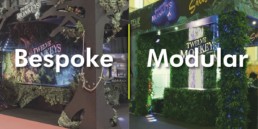When organising products in a display the right level between too much and too little, can easily get confusing if there is a variety of products. Too many products will make the display look messy and unorganised, and too little will make it look unfinished. If the display is made up of large and small products then the first idea is to separate them. This also depends on the colour scheme between them, as if the colour flow well together then they could be displayed together.
Ideally products are grouped together with three or less colours which work well together. It is more pleasing to the eye. Products can also be placed together by category, e.g. kettles, microwaves and toasters. These can be placed together as they are all kitchen appliances. However a way to make the display more eye-catching would be to use a strong colour against a paler one, e.g. white and red. This breaks up the display and makes it brighter. This means the customer is more likely to stop and have a look. Try to avoid monochrome displays as human eyes tend to quickly move on without buying.
Product Engagement
With stand design comes height, which means more space to place products and new strategic ways of organising them. This allows the customer to see the products from different angles and even pick them up. Try to avoid putting up signs that say DO NOT TOUCH as displays are supposed to get messed up, and the point of an exhibition is to be interactive.
If possible try to offer some form of refreshments as it will be much appreciated, and will help draw in customers. Then as these customers are already in the retail space, they will more than likely look around which may result in a sale. This will also leave a lasting impression on the customer.
For example:
Customer One “Where did we buy that teal lamp from again?”
Customer Two “The same place we got those free fruit pots!”
Another simple way of attracting customers in is by showing, not telling. People often like to see what something will look like in their own home before buying it. A great example of this is furniture shops, they often set up displays of their products in a living room setting. The same can be done with cookware in a kitchen setting. This won’t be particularly easy with a small retail space, although it mainly depends on what is being sold. However this could be done on a smaller scale, to give the customer a similar idea.
Brenton Mercer
Managing Director of Mercer Exhibitions, leads with vision, transforming spaces worldwide. Renowned for innovation and client-focused solutions, Mercer shapes unforgettable brand experiences through exhibitions.

